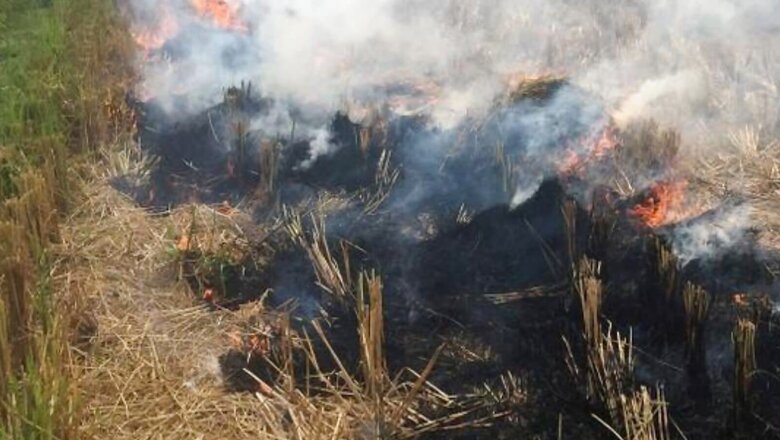
views
Every year, around mid-October, the air of Delhi and the surrounding area are engulfed in heavy and hazy layers of smoke that make it hard to tell the difference between morning and evening. The toxic environment is hazardous for all ages of people. People seldom enjoy the winter sun in the capital city, and the reason for this abysmal air is Stubble Burning.
Stubble Burning has been an integral issue that doesn’t seem to be on the roads to resolution, let alone reach it. Stubble Burning is a problem that doesn’t produce somebody solely culpable but poses as a collective crime towards the environment. It is believed that the best way to solve a problem is to understand it first, and this article aims to do just that. So, let’s dissect this dismal deed that drowns cities in smoke every year.
What is Stubble Burning?
Wheat and Paddy are the most prevalent crops in the agricultural states, such as Punjab and Haryana. Earlier, farmers used to carry out the harvesting manually. However, with the Green Revolution, the use of machinery was promoted, which gave rise to the use of Harvesters and Thrashers. The Harvester only cuts the crown of the crop. The crown is the upper part that contains wheat and rice. As a result, a major chunk of the crop is left behind and is known as Stubble, which includes the stems and the root pods.
How Did Stubble Burning Start?
The groundwater level in the agricultural states of Punjab and Haryana stooped very low due to the existence of high-yielding crops, which requires three times the water required for a regular crop. The usage of high-yielding crops was a result of the green revolution as well. As a result, the groundwater started reaching dangerously low levels. To counter the problem, the government of the two states passed a law called ‘Punjab Preservation of Subsoil Water Act’ in 2009.
According to this, the farmers were directed to grow their crops in the month of June instead of May, so that a significant portion of water is sourced from the rains in the monsoon. This would help preserve groundwater. The paddy cultivation requires more than four months, after which, the season to grow wheat starts. Because of the law passed in 2009, the time between harvesting paddy and sowing sheet shortened. And the only way to cope with this short period of time was to burn the residue.
No Way Out?
Due to the low availability to cultivate the stubble into something useful, the most suitable way that the farmers find is to burn the stubble. Stubble’s composition contains a high amount of silica, which makes it very bad fodder. Hence, feeding it to cattle is not an option. Transportation of Stubble to various places where it can be useful is also not feasible since it requires additional capital and time to execute.
A Clear Vision Might Be In Sight
Stubble Burning contributes to a plethora of problems affecting environmental health. Officials have come up with solutions by giving subsidies on resources used to cultivate stubble, for example, the happy seeder tractor, which cuts stubble and plants wheat seeds simultaneously, or straw baler, which makes compact bales out of stubble and straws. However, such resources coming into mainstream agricultural practice will take their own time due to a lack of capital and awareness in farmers.
Read all the Latest News , Breaking News and IPL 2022 Live Updates here.















Comments
0 comment